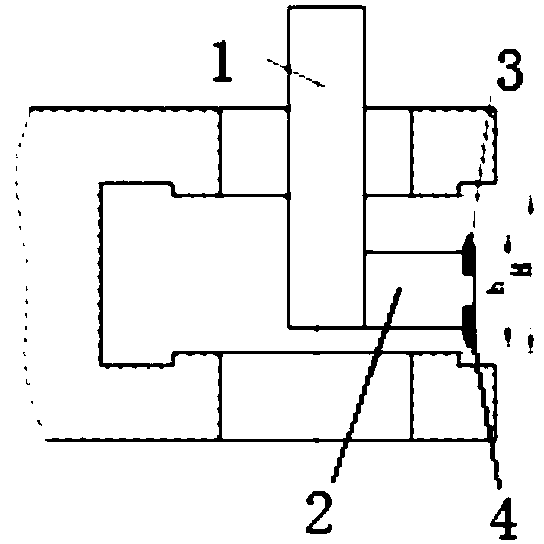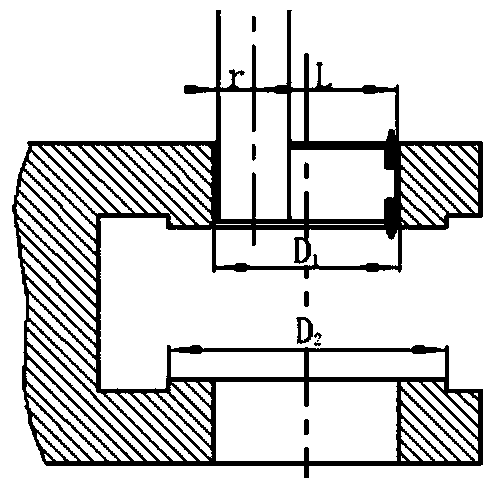Method for machining end surfaces of inner cavity holes by using two-end cutter
A technology of hole end face and tool, which is applied in the field of workpiece processing, can solve the problems of difficult control of size, tool chipping and damage, low efficiency of single-edged knives, etc., and achieve the effect of easy control of processing size, reduction of tool cost, and not easy to let the knife phenomenon
- Summary
- Abstract
- Description
- Claims
- Application Information
AI Technical Summary
Problems solved by technology
Method used
Image
Examples
Embodiment 1
[0046] Attached below Figure 1-Figure 5 The present invention is described in detail, specifically, the structure is as follows:
[0047] This embodiment provides a method of using a double-ended tool to process the end face of the inner cavity hole. The same double-ended tool is used to process the upper end surface and the lower end surface of the inner cavity hole of the workpiece, including the tool holder 1, the tool body 2, the upper tool head 3 and the lower tool. Head 4, the cutter body is installed on one side of the cutter bar, the upper and lower ends of the front end of the cutter body are respectively installed with the upper cutter head 3 and the lower cutter head 4, and the tip of the upper cutter head 3 faces upwards, and the tip of the lower cutter head 4 faces upwards. Down. The distance h between the tip of the upper cutter head 3 and the lower cutter head 4 is smaller than the distance H between the upper and lower end surfaces.
[0048] Taking the lower...
PUM
 Login to View More
Login to View More Abstract
Description
Claims
Application Information
 Login to View More
Login to View More - R&D
- Intellectual Property
- Life Sciences
- Materials
- Tech Scout
- Unparalleled Data Quality
- Higher Quality Content
- 60% Fewer Hallucinations
Browse by: Latest US Patents, China's latest patents, Technical Efficacy Thesaurus, Application Domain, Technology Topic, Popular Technical Reports.
© 2025 PatSnap. All rights reserved.Legal|Privacy policy|Modern Slavery Act Transparency Statement|Sitemap|About US| Contact US: help@patsnap.com



